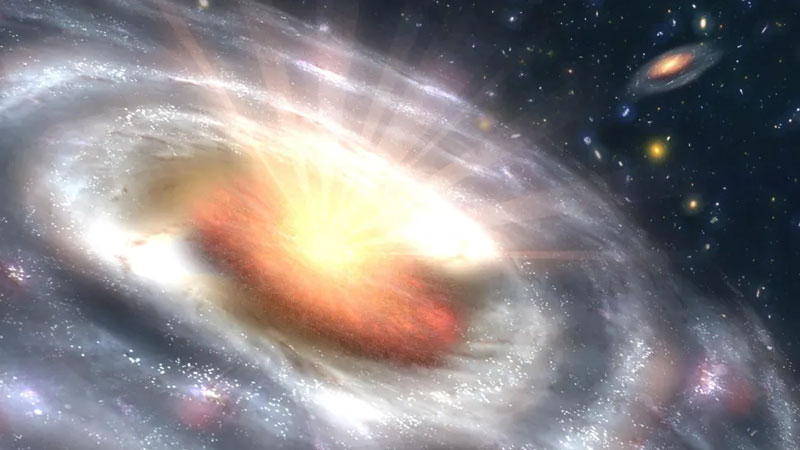Quasars are active galactic nuclei, which are supermassive black holes that continuously absorb matter falling into them. How surprised scientists were when, in the early Universe, the James Webb Space Telescope discovered quasars without a detectable environment of matter. It is simply impossible for the radiance of quasars to be observed billions of years later and appear in complete emptiness.

Artistic representation of a quasar. Image source: NASA/JPL–Caltech
«Contrary to previous belief, we find that, on average, these quasars are not necessarily found in the densest regions of the early Universe. Some of them seem to be located in an unknown location,” Anna-Christina Eilers, an associate professor of physics at the Massachusetts Institute of Technology, shared in a statement. “It’s hard to explain how these quasars could grow so large if they don’t seem to have anything to eat.”
Modern cosmology suggests that a cosmic web of threads of dark matter and its clumps at nodes contributed to the concentration of ordinary matter and its transformation into stars, galaxies and everything else. Made with the help of the observatory. James Webb’s discoveries introduce uncertainty into these hypotheses and theories. Webb was able to peer down to 13 billion years ago or more, when matter in the Universe formed the first galaxies, and these galaxies, as well as the supermassive black holes at their centers, turned out to be unexpectedly large. According to the standard model, they simply would not have had time to evolve to recordable sizes.
These problems were not enough, but new ones emerged. Scientists studied the five earliest quasars discovered at 600–700 million years after the Big Bang. Researchers were concerned with the question: what do they eat if they became so large already in the early stages of their evolution? It turned out that some quasars have no detectable substance at all within their “habitat.” Their brightness and accretion of matter cannot be explained at all. At a range of wavelengths, scientists found no signs of matter.
It would be logical to expect that quasars in the early Universe are found in regions of dark matter nodes, where there are many, for example, visible galaxies. But some of the observed quasars had only 2 galaxies nearby, while others had 50 or more. This suggests that supermassive black holes (quasars) grew from an evolutionary mechanism unknown to science, which has yet to be discovered. It is possible that new observations will help to detect cold accumulations of gas and dust near quasars, but this still does not fit well into modern cosmological concepts.